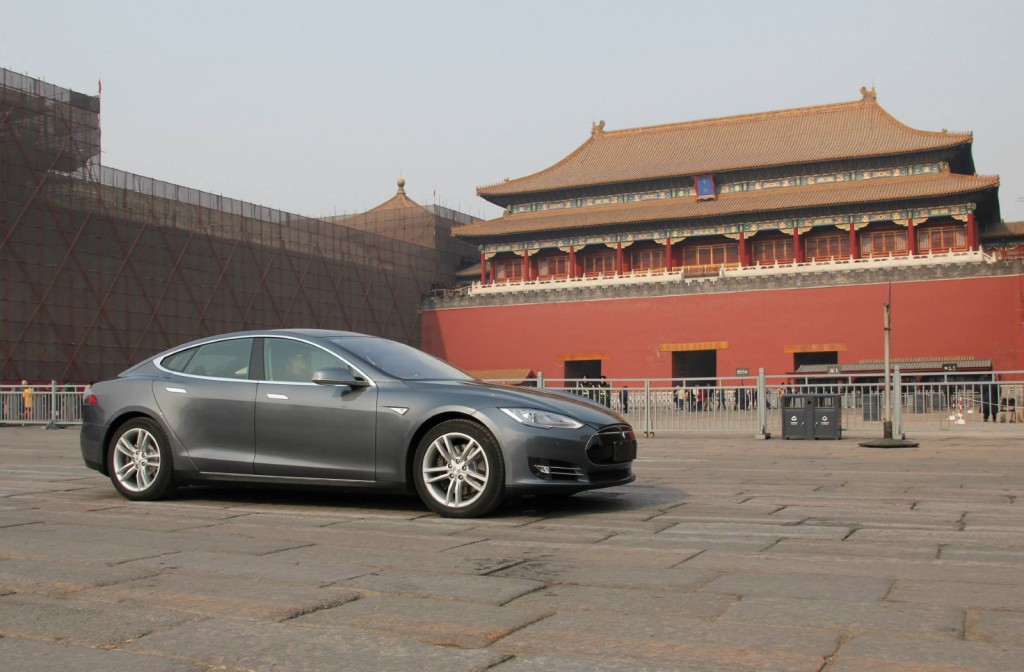Eight weeks ago, China seemed to be preparing to loosen its famously strict car-manufacturing rules for foreign makers.
The government leaders who direct economic policy had seemingly concluded that Chinese makers could not succeed in selling cars in Europe and North America.
So the country proposed to relax joint-venture rules for so-called New Energy Vehicles, to get Chinese manufacturers more competitive in electric cars.
DON'T MISS: China to loosen electric-car rules for foreign makers, because they didn't work (Jan 2017)
Now, however, the indications have turned murkier.
According to Bloomberg, the regulators are considering cutting China's ambitious goals for sales of electric cars. That could give Chinese companies breathing room to catch up.
Feedback from automakers that the numbers are too aggressive coincided with a dramatic January drop in sales of plug-in cars after purchase incentives were reduced.

BYD e6 electric taxi in service in Shenzhen, China
Draft rules last September raised the overall "new-energy vehicle score" that car makers had to achieve to 8 percent of sales, under a system that weights various types of vehicles differently.
Last year's figure was just 3 percent of sales, much lower than the 2018 number.
Miao Wei, China’s minister of industry and information technology, told Bloomberg that the regulation is still being written, and could be finished by May or June.
READ THIS: China to crack down on green-car subsidy cheating: report
China's national subsidy for purchase of a plug-in car fell by 20 percent on January 1.
January's sales of plug-in hybrids, battery-electrics, and fuel-cell vehicles fell by 74 percent over those in January 2016, to just 5,682 units.
Local industry analysts largely agree that the sales levels for plug-in cars were too much, too soon.

Slide detailing Volkswagen Group China electric car plans (via Autohome)
Many of the battery-powered vehicles intended to help meet the goal are still being developed, for one thing.
For another, it remains unclear how much natural consumer demand for plug-in and zero-emission vehicles exists among Chinese buyers, many of them still shopping for their first-ever vehicle.
"It is not realistic to ask carmakers to suspend their sales of combustion vehicles so as to be compliant for the [new-energy vehicle] quota," said Robin Zhu, a Hong Kong-based analyst with Sanford C. Bernstein, to Bloomberg.
CHECK OUT: China's five-year budget for renewable energy: $360 billion
Green Car Reports reached out to longtime China hand Michael Dunne of consultancy firm Dunne Automotive for some context.
"There will be more give and take, push and pull, back and forth, etc in the weeks and months ahead," he said about the rumors of reduced sales goals.
He also commented on some of the politics around the country's rules around ownership of electric-car-making companies—and how they played into its goals of dominating global production of plug-in cars.

2014 Tesla Model S in China
Dunne noted that China had lifted its cap on foreign ownership of electric-car battery companies last summer, provided they are located in specific cities.
Subsequently, however, the country produced a "white list" of qualified battery suppliers under those rules.
"For reasons that are not clear," Dunne said, "the Korean battery makers did not appear on the white list for 2017."
That means that joint-venture companies (under the standard model, these are owned half by China, half by a non-Chinese global maker) must use Chinese cells instead of those from leading global suppliers like LG Chem and Samsung.
That requires them to work with the Chinese battery companies to improve the quality and durability of their cells, bring them up to competitive energy-density measures, and more.

Chevrolet Sail Electric Concept Vehicle
Dunne noted that Shanghai-GM, one of the largest joint-venture automakers in China, signed a $1 billion battery-supply contract last summer with A123 Systems.
That company, originally a U.S. startup that ended up in bankruptcy following quality debacles in the batteries it supplied to Fisker Automotive in 2012, is now owned by Wanxiang, China's largest auto-parts supplier.
Dunne suggested the cuts in sales goals might make relaxation of ownership and intellectual-property rules unnecessary.
Like many such policies in the world's largest car market, it remains unclear how this will all shake out.
_______________________________________













